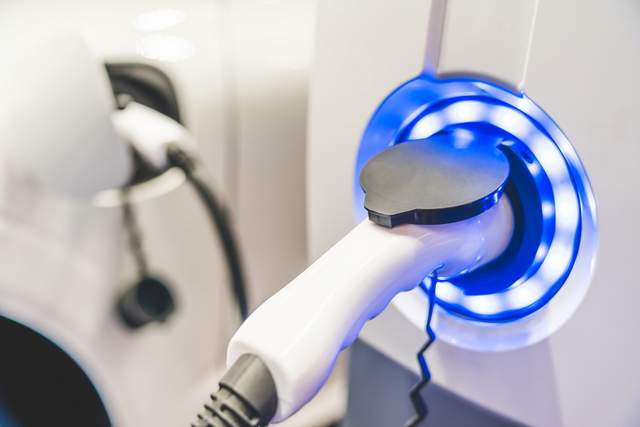
Electric vehicles are coming, and grid planners, regulators, developers and solar companies should all be ready to build the complementary infrastructure. Here’s a roundup of all the recent EV segments news to keep you up to date.
AEE’s seven steps to prepare for EV surge
Advanced Energy Economy (AEE) released an issue brief outlining seven steps state regulators should take to prepare for a surge in electric vehicles. In EVs 101: A Regulatory Plan for America’s Electric Transportation Future, AEE notes that plug-in electric vehicles (EVs) currently account for a small share of vehicle sales, but a high – and accelerating – growth rate is putting EVs on the agendas of public utility commissions (PUCs) around the country. To address the potentially rapid electrification of the vehicle fleet – from passenger cars to delivery vehicles, buses, and trucks – state regulators should take measures to maximize the benefits and minimize the challenges associated with this transportation transformation.
In EVs 101, AEE urges PUCs to take seven specific steps:
1. Establish an electric vehicle regulatory framework. PUCs should use a collaborative process to gather information, then put out its viewpoint in a white paper on the key regulatory issues for EVs to reduce uncertainty in the marketplace. An open, collaborative process allows everyone to participate, ensuring that the best information is brought forward.
2. Consider roles for various stakeholders in electric vehicle charging infrastructure ownership and financing. Regulators need to clearly define appropriate roles for utilities and third-party companies to play in owning and financing charging infrastructure. Both utilities and third parties have critical roles to play and should be able to develop, own, and operate charging facilities under appropriate rules and market conditions.
3. Adjust utility planning and operations to fully integrate electric vehicles. As the EV market grows, utility planning and operations will need to incorporate EV load forecasts, make modernization investments for smart charging, adopt streamlined interconnection processes, and ensure interoperability standards are observed for public charging stations.
4. Implement rate designs for an electric vehicle future. Regulators should consider EV-only tariffs and well-designed time-varying rates to encourage off-peak charging. In the early stages of market development, regulators should also provide relief from excessive demand charges under EV-only rates to support the use of chargers.
5. Ensure that vulnerable populations are not left behind. As the EV market unfolds, particular attention should be given to low-income and other vulnerable populations. Regulators should take steps to improve the ability of these communities to access the EV market and apply longstanding principles of consumer protection to ratemaking decisions with cost implications.
6. Educate consumers. Given the important role that consumer awareness plays in EV adoption and utilization of charging infrastructure, regulators should allow utilities to use their unique relationship with customers and experience in customer engagement from energy efficiency programs to improve access to EV information.
7. Prioritize consideration of medium- and heavy-duty fleets. Vehicle fleets have the potential to provide electrification at scale in the near term, with substantial benefits to the grid and society, and some operators are already starting to make large commitments to electrifying their fleets. Commissions should explicitly look at fleets in the context of the regulatory issues outlined in this paper.
New York launches first EV charging station installation rebate

Governor Andrew M. Cuomo announced that $5 million is available as part of the first rebate designed specifically for the installation of electric vehicle charging stations at workplaces, office buildings, multi-family apartment buildings, and public locations such as theaters, malls, parks and retail locations. The installation of charging stations for public use supports the Governor’s ambitious clean energy goal to reduce greenhouse gas emissions by 40 percent by 2030.
“New York continues to lead the nation in reducing our carbon footprint by aggressively investing in clean transportation methods,” Governor Cuomo said. “By expanding public access to electric vehicle charging stations, this program will make it more affordable for New Yorkers to make the switch to an environmentally friendly electric vehicle, resulting in a cleaner, greener New York for all.”
Administered by the New York State Energy Research and Development Authority, the new Charge Ready NY initiative provides a $4,000 rebate per charging port for public or private employers, building owners, municipalities and non-profit organizations to install Level 2 charging stations. Depending on installation costs and the model/make of the charging station, installe rs can save up to 80 percent of a typical installation’s total cost. Level 2 stations provide up to 25 miles of electric range to cars for each hour they are charging. Charging stations must be installed at one of the following types of locations:
• Public parking lot: must have at least ten parking spaces and be open to the general public at least 12 hours per day for at least five days per week. Examples include municipal or privately-operated parking lots or garages, parking at retail locations, shopping malls, restaurants, parks, transit stations, schools and other destination locations.
• Workplace: must have at least ten parking spaces that primarily serve a minimum of 15 employees who work at or near the lot. Examples include office buildings, universities, schools, and hospitals.
• Multi-unit housing: must have at least eight parking spaces that primarily serve a building with five or more housing units, such as apartment buildings, condominiums and co-ops.
This new initiative supports the Governor’s Charge NY 2.0 initiative, which aims to have at least 10,000 charging stations across New York by the end of 2021,so clean cars can travel across the State with the opportunity to recharge along the way. The initiative also builds on the Governor’s Charge NY initiative, which was launched in 2013 and has a goal of having 30,000 to 40,000 electric cars on the road by the end of 2018.
To complement Charge Ready NY, which enables public and private organizations to apply directly for rebates, the Governor recently announced a $250 million commitment by the New York Power Authority to accelerate the adoption of electric vehicles and expand electric vehicle fast charging stations along key transportation corridors and in New York City airports.
EVgo FastStart Fast Forwards EVgo Charging Station Deployment

EVgo, the nation’s largest public electric vehicle (EV) fast charging network, unveiled EVgo FastStart, a mobile and modular fast charging station configuration that can be deployed in a matter of days or weeks, at the Solar Power International and Energy Storage International conference.
Engineered to meet accelerating demand for EV chargers, the patent-pending EVgo FastStart station offers fast and easy deployment for partners with immediate charging needs, short-term site leases, or fleet customers requiring electric charging in temporary depots. The pre-fabricated EVgo FastStart can be deployed on a modular basis with multiple modules per site in just days or weeks, limited only by the power available. EVgo FastStart stations come in DCFC, Level 2, or combination configurations.
— Solar Builder magazine

Leave a Reply
You must be logged in to post a comment.